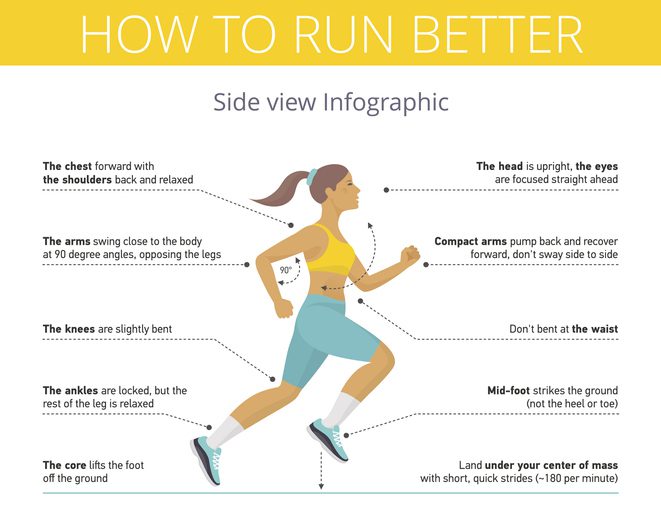Easy runs are about paying attention to technique
Here's what you should be focusing on during your easy runs

Fast running, including strides and intervals, often results in better run mechanics as the body finds ways to produce speed. However, at slower speeds, there are a variety of ways in which the body can adopt poor mechanics.
Since there’s a significant amount of run volume done at slower speeds, it’s crucial to pay attention to how you run when you’re running easy. The following are some tips on what to focus on during easy runs.
Related: Break out of winter with a 5K road race
Posture: Posture is the literal backbone of good running.
Additionally, mobility plays a big role in a proper running posture. In the absence of ideal mobility, focusing on running tall is a good start.
Athletes should think about bringing their shoulders down and back, straighten through the torso, keep the ears in line with the shoulders, avoid bending at the waist and lean from the ankles. Perfection is not the goal. Instead, strive for better efficiency by running stacked from ankles to knees, hips, shoulders and head (running tall).
Related: Activation drills for triathletes
Feet: Taking the earbuds out and listening to your feet is a great cue for running.
Loud, hard slaps on the pavement are an indication you are overstriding or not absorbing ground contact – a sign of poor run technique. This inefficiency will increase the impact on the knees and hips.
Starting with the above cues on posture, lean from the ankles and shorten your stride. Ideally, this leads to an increase in leg turnover and a quieter foot strike.
Related: The strength training you should be doing

Arms: If the arms track straight, the hips follow.
The arms counteract movement in the hips. So, if the hips are dropping and twisting, the arms will turn in the opposite direction to counter this rotation.
To encourage forward momentum, focus on keeping the arms at approximately a 90-degree angle and swinging the arms directly forward and backward in an arc beside the hips. Any movement outside of a forward direction is wasted energy and can lead to injury.
The next time you go out for an easy run, leave the earbuds at home and use the time to focus on how you are running. Improving the execution of your easy runs will reap rewards in the race season.
Melanie McQuaid is a three-time XTERRA and two-time ITU Cross Triathlon World Champion, professional triathlete, and coach at MelRad Multisport www.melrad.com


